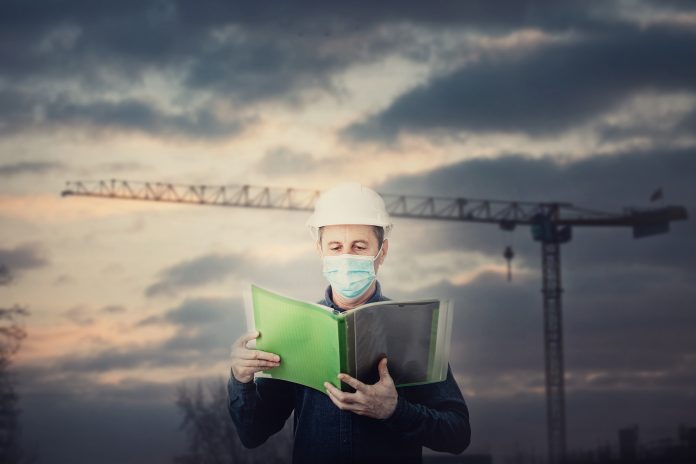Employment lawyer, Rebecca Mahon, and Health and safety consultant, Mark Littlejohns, give their take on the legal implications of long-COVID in construction workplaces
There are various definitions of long-COVID, and we are learning more about the condition all the time. It is a difficult condition to diagnose and manage, further complicated by new variants of the coronavirus being discovered regularly. The longer-term effects of the disease are becoming an increasing concern for businesses, particularly those which rely heavily on manual labour. Symptoms of long-COVID include loss of cognitive function, fatigue, shortness of breath, chest pain and “brain-fog” – and these are just the “headline” symptoms.
Is long-COVID classed as a disability?
The pandemic has been with us for over two years now. Those who became infected with the coronavirus at the start of the pandemic, and who are still suffering side effects, are likely to be deemed disabled by law. A person is disabled in law if they have a physical or mental impairment that has a substantial and long-term adverse effect on that person’s ability to carry out normal day-to-day activities (Equality Act 2010). What might constitute a normal day to day activity is subjective and would include basic functions like walking, standing, eating, going to the toilet, but also things like being able to lift moderately heavy items or driving a truck if those things are “normal” for that person.
Long-COVID will not always be a disability, as this is something that must be assessed in each individual case. But it seems likely that someone who becomes unable to do their job properly because of an infection they caught months ago will satisfy the test. A condition is long-term for the purposes of the Equality Act 2010 if it has lasted over 12 months. For employers, this means a duty to make reasonable adjustments to ameliorate any disadvantages that a person faces because of their disability, as well as a need to ensure that person is treated fairly and without discrimination. Awards in the employment tribunal for disability discrimination are uncapped.
Lighter duties can be difficult to find in construction and may not exist for all professions. However, employers are advised to consider and consult with workers on these reasonable adjustments or face the risk of claims. The EHRC Code of practice on employment has examples for what form reasonable adjustments can take and would include things like adjusting performance/absence metrics, so as to disregard any issues arising out of the condition itself.
Whether or not an employee with long-COVID is disabled is a legal question, but the wider implications of having an individual working whilst still suffering from serious side effects of the infection are just as important to consider. Employers in the construction industry will need to carefully assess those who have been diagnosed with long-COVID for health and safety purposes – especially those working at height, with heavy machinery, or at night-time.
Businesses should consult with occupational health providers when welcoming those who have been suffering from long-COVID back to the workplace. Occupational health can input into the return-to-work plan, to ensure that the individual is fully supported and safely integrated back into their role.
Long-term management of long-COVID in construction
The return-to-work process is, of course, just the start of long-COVID management in the workplace. People who still have symptoms, but are back in the workplace, should be monitored through the use of regular “check-ins” and reviews. These should be maintained as the individual (hopefully) gets better, but also if their conditions deteriorate and they need to take time off work.
If an employee remains off from work, their employer needs to consider their ongoing needs by establishing an appropriate level of contact taking their health and wellbeing needs into consideration. This should include agreeing on how they will be contacted, when and by whom and also keeping updated on their medical condition.
Whilst the best way to manage long-COVID in construction is an unknown, businesses that are seen to “grasp the nettle” and put measures in place to support those suffering from the condition are most likely to be able to demonstrate that they have a positive and supportive workplace culture, helping to attract and retain talent.
The measures don’t have to be expensive or complicated – sign-posting employees to support groups or COVID recovery apps are small steps but nonetheless, steps in the right direction which help to show care and understanding.
It is not just the individual with long-COVID that might be affected by its side effects. Co-workers and managers should be regularly trained on what to look out for, the risks of mistreating or mismanaging someone with long-COVID, and where they can turn to for help.
We remain hopeful that long-COVID will be something that people can make a full recovery from in time. However, if it transpires that the disease has life-long side effects that mean that someone is no longer able to carry out their role (fully or at all), a careful and sensitively handled process may be required to permanently reduce that individual’s duties, or exit them from the business.
When making such important and life-changing decisions, employers must be sure that have considered all the available facts, have obtained the most up to date medical evidence, and have made all possible reasonable adjustments to accommodate the needs of the employee.
Capability dismissals, where the poor performance of an individual is due to ill-health, are difficult for both employee and employer, and should only be done with the benefit of legal/HR support. This is particularly relevant in such unchartered waters as is the case with long-COVID, where there is no long-established playbook to draw from.


Rebecca Mahon
Employment lawyer
Mark Littlejohns
Head of Safety, Health, Environment & Fire














![[VIDEO] Local planning inspector recruitment to begin in earnest in new year A drive to recruit local planning inspectors will begin in the new year](https://www.pbctoday.co.uk/news/wp-content/uploads/2025/12/iStock-2159482095-2-218x150.jpg)